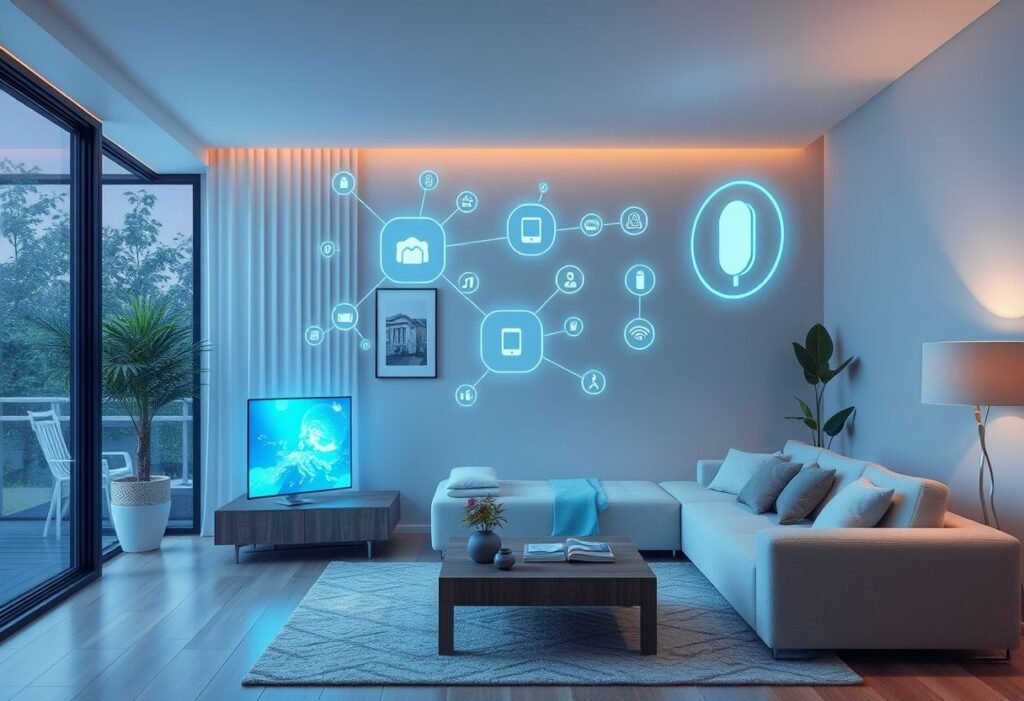The Internet of Things (IoT) is at the forefront of home automation innovation, transforming how we interact with our living spaces. By integrating smart devices and systems into our homes, IoT enables enhanced efficiency, convenience, and security. This article explores the impact of IoT on home automation and how it is revolutionizing modern living.
Smart Home Devices Shaping Our Lives
One of the most significant innovations of the IoT is the range of smart home devices that cater to various aspects of daily life. From smart thermostats that optimize energy use to intelligent lighting systems that adapt to our preferences, these devices are designed to enhance comfort and reduce utility costs. With the integration of voice-activated assistants like Amazon Alexa and Google Assistant, users can control multiple devices effortlessly, paving the way for a more efficient living environment. Internet connectivity enables these devices to communicate, making them essential components of the smart home ecosystem.
Improved Energy Management
IoT-driven home automation significantly enhances energy management. Smart thermostats learn user behavior and adjust heating and cooling in real-time, resulting in significant energy savings. Additionally, smart appliances can run during off-peak hours to minimize energy costs. These energy-saving features are crucial in today’s world, where sustainability is a priority. Empowered homeowners can not only reduce their carbon footprint but also enjoy lower monthly utility bills as a result of their innovative home automation systems.
Enhanced Home Security Solutions
Home security has been transformed through the adoption of IoT technologies. Smart security cameras, motion detectors, and smart locks allow homeowners to monitor their properties remotely. These systems utilize real-time alerts and notifications to keep users informed of any suspicious activity. Advanced systems can even integrate facial recognition technology to differentiate between familiar faces and potential intruders. This level of control and monitoring provides peace of mind, ensuring that families feel secure in their own homes.
Seamless Integration and Control
One of the hallmark features of IoT is the seamless integration of multiple devices into a single control system. Smart hubs allow users to manage all their devices from one location, streamlining operations. Through an intuitive app, homeowners can set schedules, create automation scenarios, and receive alerts. This level of control not only enhances the user experience but also optimizes the overall functionality of the smart home. Users can enjoy greater flexibility and convenience, allowing them to customize their home environment to suit their unique lifestyles.
Health and Wellness Benefits
The IoT plays a critical role in promoting health and wellness within the home environment. Smart devices such as air quality monitors and smart lighting solutions can create a healthier living space. By monitoring indoor pollutants and adjusting lighting based on activity or time of day, these products support overall well-being. Furthermore, IoT-enabled fitness devices can monitor physical activity and health metrics, providing valuable insights to users regarding their health. This convergence of technology and well-being fosters a more holistic approach to home automation.
Future Outlook and Innovations
The future of home automation is promising, powered by continual innovations within the IoT sector. As technology evolves, we can expect even more sophisticated solutions that prioritize user experience and adaptability. Artificial intelligence and machine learning can aid in predicting user needs and adjusting home systems accordingly. The potential for smart homes to integrate with new technologies, such as renewable energy sources, opens new doors for sustainable living. IoT stands as a catalyst for a smarter, more innovative future in home automation.
Disclaimer: This article is for informational purposes only and does not constitute professional advice. Readers should assess their own circumstances before making changes to their home automation systems.





















